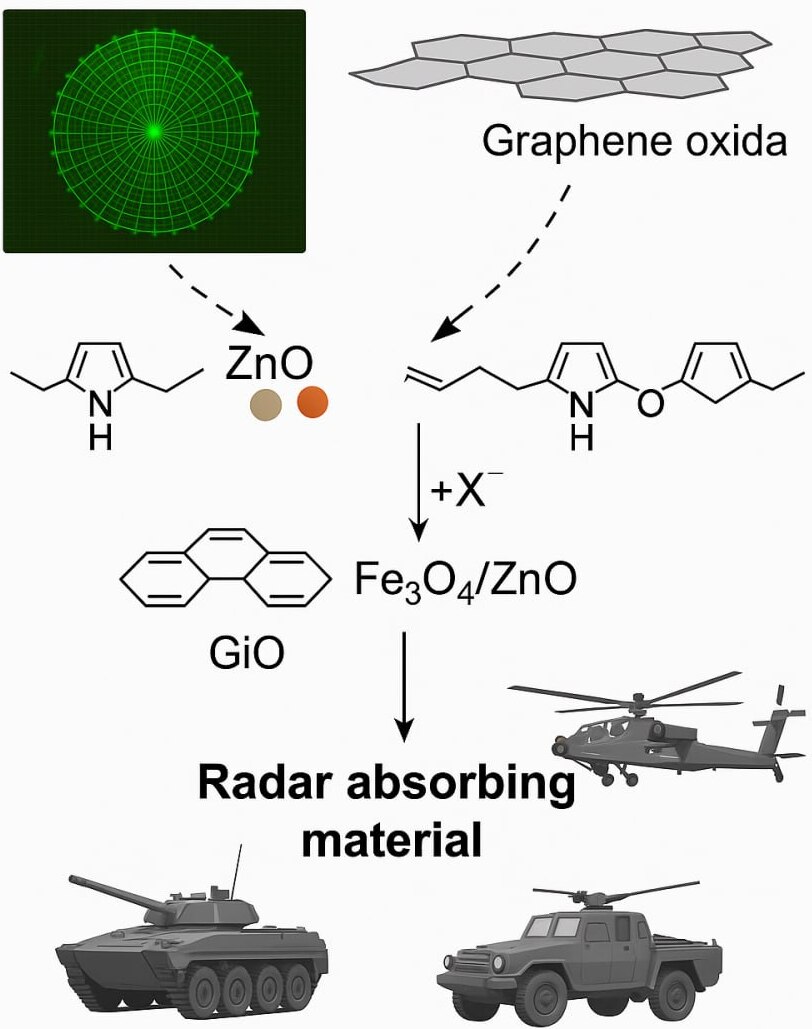Radar Absorber Composite Graphene Oxide/Magnetite/Zinc Oxide in Polypyrole Matrix
DOI:
https://doi.org/10.55749/ss.v1i1.80Keywords:
Carbon composite, Fe₃O₄/ZnO, Polypirrol, Radar absorbing material, Stealth technologyAbstract
The development of stealth technology in modern defense systems demands superior radar absorbing material (RAM) innovation. This study aims to synthesize and characterize Fe₃O₄/ZnO modified carbon-based RAM composites in a polypyrrole (PPy) matrix using graphite oxide (GiO). The composites were synthesized via a modified Hummer method as well as a one-pot technique, and characterized using FTIR, XRD, SEM-EDX, and VNA. The FTIR characterization results showed that the C=C peak decreased in intensity after the oxidation process, indicating the breaking of the aromatic double bond and the formation of new functional groups such as C–O and C=O. This change was detected in both pGiO and kGiO samples. XRD data showed a shift in the main peaks to 2θ = 11.25° and 42.20° for pGiO and 2θ = 11.56° and 42.40° for GiO-k, respectively. This shift indicates the formation of a more amorphous graphite oxide structure compared to the original graphite.The results show that GiO/Fe₃O₄/ZnO has the highest reflection loss value of -9.20 dB at 10.91 GHz (GiO-p/Fe₃O₄/ZnO 66%-PPy) with an absorption value of 88.03% and rGO/Fe₃O₄/ZnO/PPy the highest RL value reached -7.51 dB at 11.57 GHz (rGO-k/Fe₃O₄/ZnO 66%-PPy) with an absorption value of 82.21%. This research proves that Fe3O4/ZnO modified carbon-based composites in a polypyrrole matrix have high potential as an efficient radar absorbing material and can support the needs of domestic defense technology.

Downloads
Published
Issue
Section
License
Copyright (c) 2025 Sorption Studies

This work is licensed under a Creative Commons Attribution-ShareAlike 4.0 International License.






